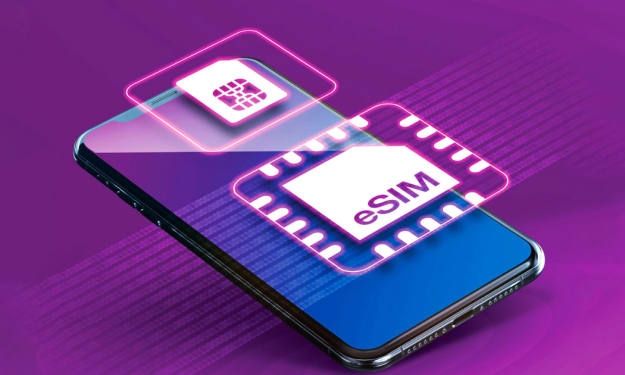
What is an eSIM card?
An eSIM (embedded SIM) is a programmable SIM card that is embedded in a device and can be remotely programmed to connect to a wireless network. This eliminates the need for a physical SIM card and allows users to switch carriers without having to replace the SIM card. It also allows multiple SIM cards to be active on the same device.
Benefits of eSIM Cards
ESIM cards offer a number of benefits when compared to traditional SIM cards. They are incredibly convenient as they allow you to switch providers, change plans, and update the software all from your phone. They are also much more secure as they are not physically removable and require a PIN code to access. Additionally, eSIM cards have a longer lifespan than traditional cards and can store more data, making them perfect for those who need a lot of data or who frequently switch providers. Finally, they are much lighter, so they are perfect for devices that need to be portable.
How to Set Up and Activate an eSIM Card
Setting up and activating an eSIM card is a simple process that can be done quickly for most users. To start, locate the activation code for your eSIM card. This code can typically be found on the card itself or in the accompanying paperwork. Next, open the settings app on your device and navigate to cellular or mobile data. Select the option to add a new line or cell plan and then select eSIM. Follow the prompts to enter your activation code and any other information that is required. Once you have entered the information, follow the onscreen instructions to complete the setup process. After completing the setup, your eSIM should be activated and ready to use.
eSIM Security and Privacy
eSIM technology is an innovative form of SIM cards that are embedded directly into a device. It offers many advantages, such as reduced cost and size, greater flexibility, and improved security and privacy. However, like any technology, it also comes with potential risks.
One of the main concerns with eSIM is the security of its data. Since the SIM card is embedded in the device, its data may be vulnerable to hacking or other forms of attack. This can lead to the theft of information such as contacts, account information, and even financial details. To ensure the security of eSIM data, it is important to use strong encryption and authentication protocols.
Another potential risk with eSIM is the privacy of its users. Since the SIM card is embedded in the device, it is possible for others to track its location and access its data. It is important to ensure that the device has appropriate security measures in place to protect the privacy of its users. This includes using strong encryption and authentication protocols, as well as disabling data sharing and location services when not in use.
Finally, it is important to be aware of the potential for fraud and abuse of eSIM. Since the SIM card is embedded in the device, it is possible for it to be used for fraudulent purposes. It is important to ensure that the device is regularly updated with the latest security patches and that appropriate authentication protocols are used.
Overall, Regional eSIM technology offers many advantages, but it is important to be aware of the potential risks associated with it. By taking appropriate steps to secure the device and its data, users can ensure that their privacy and security are not compromised.
Comparing eSIM and Traditional SIM Cards
eSIMs and traditional SIM cards are both used for mobile phones, but there are several differences between them.
Traditional SIM cards are physical cards that contain a chip with a unique identifier that is associated with your mobile phone number. This chip is inserted into the phone and stores information about the user's network provider and other settings.
eSIMs, on the other hand, are embedded into the phone and do not require a physical card. They contain a digital version of the same information that is stored on a traditional SIM card.
One of the main advantages of eSIMs is that they allow users to switch between different networks without having to purchase a new physical SIM card every time. Additionally, eSIMs are much more secure than traditional SIM cards, as they are tied to the user's device and not the network provider.
Overall, eSIMs provide a more convenient and secure way of connecting to a network than traditional SIM cards, but they are not available on all phones yet.
eSIM Card FAQs
An eSIM (embedded SIM) card is an embedded version of the traditional SIM card that is used in most mobile phones today. Unlike traditional SIM cards, an eSIM is a virtual card that is stored digitally in the phone and can be used to activate a mobile plan without having to physically insert a physical SIM card into the device
About the Creator
Enjoyed the story? Support the Creator.
Subscribe for free to receive all their stories in your feed. You could also pledge your support or give them a one-off tip, letting them know you appreciate their work.





Comments
There are no comments for this story
Be the first to respond and start the conversation.